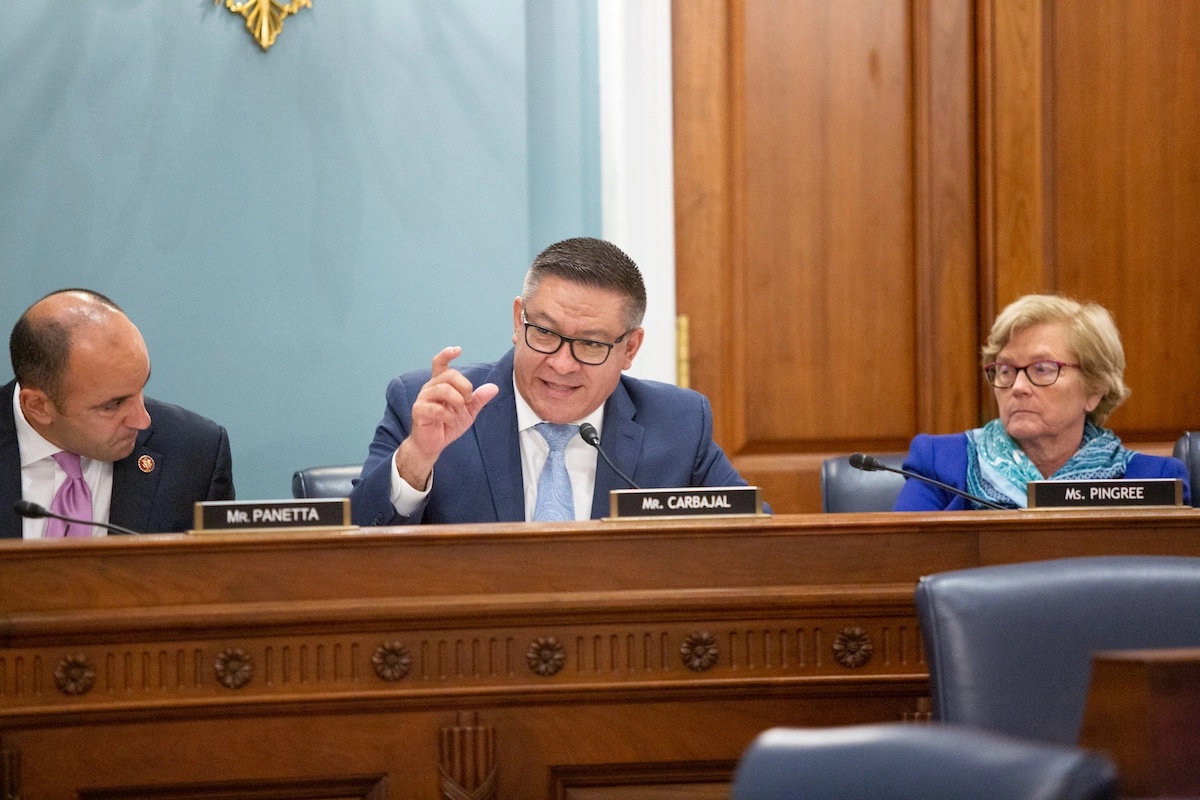In what was a rare pinch-me moment for Congressmember Salud Carbajal, President Joe Biden signed into law a compromise gun control package measure — the first one to pass in the past 30 years — that included “red flag” language inspired by a 2014 mass shooting in Isla Vista that Carbajal initially introduced in the House earlier this year.
“I thank God the stars were aligned and all the parts came together,” Carbajal exclaimed. “It’s not a panacea, but it’s going to save lives.”
Specifically, the bill signed by the president sets aside $750 million to defray costs incurred by state and local governments for implementing what’s alternately known as Gun Violence Restraining Order or an Extreme Risk Restraining Order, or ERPO for short. This measure allows family members, law enforcement officers, co-workers, and teachers to petition the court to temporarily seize the firearms of individuals judicially determined to pose a serious potential risk.
“$750 million!” exclaimed Carbajal. “That’s a quarter less than a billion. That can do a lot of good.”
The price tag for the total package of reforms signed by Biden is $13 billion. Of that, the most goes to enhanced mental health funding and increased schoolhouse security and fortification against mass shooters. Many states have already adopted red flag law rulings, but their utility remains a mixed bag, mostly because so few people — and law enforcement agencies — are aware of their existence or how to utilize them.
Carbajal says the funding will help states that have such laws better implement them and entice states that don’t by reducing costs. The measure contains no orders or mandates, he stressed.
California adopted its first red flag law — sponsored by then Assemblymember Das Williams and State Senator Hannah-Beth Jackson — in response to Elliot Rodger’s May 2014 rampage through Isla Vista that left seven people dead.
Gun violence experts at the University of California Davis estimate red flag laws have prevented 58 mass shootings since then by getting firearms out of the hands of potentially violent individuals. Santa Barbara County has been among the most aggressive of California’s 58 counties in deploying the law. In the first year, Santa Barbara pursued 20 gun-violence restraining orders. By 2020, that number had jumped to 851.
County Sheriff Bill Brown said the law offered a balance approach to temporarily disarm individuals who posed a potential risk to themselves or others without having to make the case they required to be placed on an involuntary psychiatric hold. Like Carbajal, Brown stressed the measure was “not a cure-all,” noting that his deputies had, in fact, conducted a welfare check on Rodger shortly before his killing spree but were impressed by his demeanor.
“There are people out there who can be chameleon-like in affect,” Brown stated, “and convince people that everything’s all right.”
Carbajal was quick to state the gun violence bill signed into law — however historic — still leaves much to be desired. Among other things, he said, assault weapons should be banned outright, and large ammo clips should be strictly regulated.
“It’s not perfect,” he said, “but I hope we don’t have to wait another 30 years for the next one.”
Support the Santa Barbara Independent through a long-term or a single contribution.




